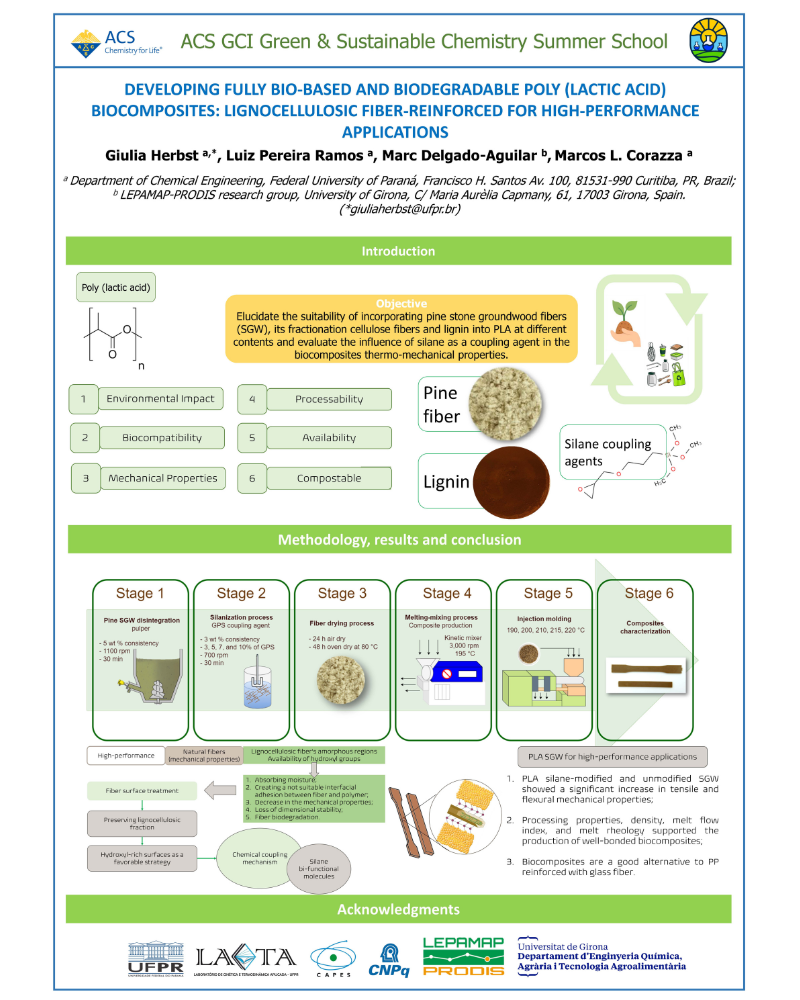
Poly (lactic) acid biocomposite materials composed of PLA matrix reinforced with natural fibers can exhibit enhanced mechanical properties, thermal stability, and lightweight characteristics, making them suitable for high-performance applications in automotive, aerospace, and packaging industries. The incorporation of natural fibers not only improves the strength and durability of PLA but also maintains its eco-friendly nature. However, improving interfacial adhesion between natural fibers and polymers is crucial for enhancing composites' mechanical properties, such as strength and stiffness, since a better adhesion ensures that the load is effectively transferred from the polymer matrix to the fibers, resulting in composites with higher tensile strength and stiffness. Silane coupling agents contain both organic functional groups and alkoxy groups in one molecule. The alkoxy groups hydrolyze to form silanol groups, which can bond with natural fibers. The organic functional groups can then react with the polymer matrix, creating a strong bond between the fiber and the polymer. By using silane coupling agents, manufacturers can produce composites with superior mechanical properties and durability, making them suitable for a wide range of high-performance applications.